Thanks to @FrailWords's answer.
I completed my proposal to use the same UI codebase for multiple angular applications.I am sharing my leanings here.
Some approaches are staying same as I mentioned in this question.
List of Strategies to be followed in this proposal:
1. Switch to feature based directory structure.
2. Create an angular module for each feature.
3. Separate common code from instance specific code.
4. Merge duplicate code.
5. Remove unused code and outdated libraries.
6. Re-organize codebase.
7. Make common code as configurable.
8. Use same configurable common code for all 5 instances.
9. Use inheritance or similar mechanisms for extended functionality.
10. Identify & Move functions (methods) from instance specific code to common code.
11. Follow naming conventions.
12. Manage future requirements.
13. Use build tools like gulp or grunt and testing frameworks like jasmine.
14. Application specific look & feel.
How to implement these Strategies:
We will see solutions/approaches for each strategy below.
1. Switch to feature based directory structure.
Current directory structure:
It is based on angular layers/types. That is we placed all controllers in one folder, all services in another folder etc. This is good small applications.
Example:

Proposed directory structure:
/resources
--/ui_core ui-core or common code
-----/app
-------------------core_module.js inject all modules from /ui_core/modules into this
-------------------config_module.js declare constants and inject into core_module
-----/shared_services part of core_module
-----/shared_directives part of core_module – place directive’s js+html here
-----/shared_filters part of core_module
-----/shared_views
-----/shared_interceptors
-----/shared_content
------------/images
------------/icons
------------/signatures
-----/modules
------------/common_feature1
-------------------common_feature1_module.js
-------------------common_feature1Controller.js
-------------------common_feature1Service.js
-------------------common_feature1Directive.js
-------------------common_feature1Filter.js if any
-------------------common_feature1_view.html
-------------------common_feature1_test.js
-------------------common_feature1.css if any
------------/common_feature2
-------------------common_feature2_module.js
-------------------common_feature2Controller.js
-------------------common_feature2Service.js
-------------------common_feature2Directive.js
-------------------common_feature2Filter.js
-------------------common_feature2_view.html
-------------------common_feature2_test.js
-------------------common_feature2.css
-----/vendor downloaded vendor libraries
------------/js
-------------------/angular
-------------------/kendo
-------------------/jquery
------------/css
-------------------/kendo
-------------------/bootstrap
------------/images
-------------------/kendo
-------------------/bootstrap
--/ui_equity application specific code – for example: equity
-----/app
-------------------equity_module.js inject ui_core module/any module as required.
-----/shared_services part of equity_module
-----/shared_directives part of equity_module – place directive’s js+html here
-----/shared_filters part of equity_module
-----/shared_views
-----/interceptors
-----/content
------------/images
------------/icons
------------/signatures
-----/modules
------------/feature1
-------------------feature1_module.js
-------------------feature1Controller.js
-------------------feature1Service.js
-------------------feature1Directive.js
-------------------feature1Filter.js
-------------------feature1_view.html
-------------------feature1_test.js
-------------------feature1.css
------------/feature2
-------------------feature2_module.js
-------------------feature2Controller.js
-------------------feature2Service.js
-------------------feature2Directive.js
-------------------feature2Filter.js
-------------------feature2_view.html
-------------------feature2_test.js
-------------------feature2.css
--/minified
-----/ui_core
-----/ui_equity
/webapp
-----/WEB-INF
------------/jsp
-------------------index.jsp
-------------------jsincludes.jsp
-------------------cssincludes.jsp
-------------------imageviewer.jsp
-------------------unauthorized.jsp
2. Create an angular module for each feature.
To make our applications modular, create an angular module for each major feature/functionality of our application. We can inject these modules wherever needed.
Benefits:
Easy to reuse modular applications.
Improved readability: No need to inject individual components into other components, injecting module is enough.
3. Separate common code from instance specific code.
List of items which can be part of ui_core (common code)
a. Most of the directives
b. Filters
c. Utilities , such as arrayUtilities.js, dateUtilities.js, stringUtilities.js
d. Services
e. KendoGridServices & relevant controllers.
To make kendoGrid as part of common code, below changes are required.
For example,
- Create model outside datasource - Currently schema “model” is hardcoded inside abccontroller.js , instead of this create “kendo model” outside abccontroller.js and pass/inject to abccontroller.js
- Currently “columns” are hardcoded inside kendoabcgridservice.js. Instead of this, create “columns array” outside and inject it into kendoabcgridservice.js .
- Similarly, move out any other instance specific code from kendo grid.
Below Strategies are self-explanatory, so we can move to the next one...
4. Merge duplicate code.
5. Remove unused code and outdated libraries.
6. Re-organize codebase.
7. Make common code as configurable.
a. Create a configuration module inside common code
( /resources/ui_core/app/ config_module.js).
b. Declare constants inside that module, for example
APP_NAME = ‘equity’ and whatever required.
c. Modify the common code (ui_core), by using APP_NAME constant,
so that same code block will behave differently for different applications.
For example,
Instead of $resource(‘/equity/tasks’) use $resource(‘/APP_NAME/tasks’)
Note: Above is for example purpose only (as of now), changes in Service call URLs to be finalized after Server/Java side re-factoring.
Example 2:
If (APP_NAME == ‘equity’){
//do ‘equity’ specific things
} else if (APP_NAME == ‘commodities’){
//do ‘commodities’ specific things
} else {
……………..
}
8. Use same configurable common code for all 5 instances.
As explained earlier
9. Use inheritance or similar mechanisms for extended functionality.
If we need additional functionality apart from whatever available , instead of copy & paste existing files and adding code to that file, we can use inheritance kind of mechanism in angular as below.
Using
angular.extend
Or
angular.copy
or similar approaches.
10. Identify & Move functions (methods) from instance specific code to common code.
As explained earlier
11. Follow naming conventions
For better maintainability & consistency, define and follow certain naming convention for files.
For example,
If the functionality name is ‘user’, then naming can be like below.
/modules
-----/user
----------user_controller.js
----------user_service.js
----------user_directive.js
----------user_view.html
----------user_test.js
Either follow user_controller.js or user_ctrl .js , but ,never do both at the same time.
12. Manage future requirements
As we are living in the real world, changes and enhancements are part of life. Once we implemented above proposal, it will be very easy to modify/enhance the features without affecting other part of the application.
Anyway, before add any functionality to the existing code base, ask this very important question to yourself (developer of this application).
• Where I am going to add this feature, In Common code or application specific code?
Enjoy and Have Fun :-)
